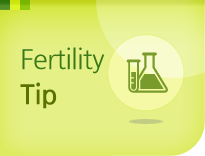-
Intrauterine insemination is a procedure in which the sperm are washed and placed into the woman's uterus near the fallopian tubes where fertilization takes place.
The insemination is done around the time of ovulation. This simple, inexpensive procedure is repeated monthly and is an effective treatment for mild cases of infertility. IUI is the most common treatment modality used for infertility associated with poor postcoital test or mild degrees of male factor infertility. In addition, it can still be effective in women with unexplained infertility and in some couples with immunological abnormalities. Tubal patency should be demonstrated through an X-ray study called 'hysterosalpingogram' prior to insemination.
-
FAQ
- Q What is IUI (intrauterine insemination)?
- Intrauterine insemination is a procedure in which the sperm are washed and placed into the woman's uterus near the fallopian tubes where fertilization takes place. The insemination is done around the time of ovulation. This simple, inexpensive procedure is repeated monthly and is an effective treatment for mild cases of infertility.
- Q Which couples benefit from IUI?
- IUI is most commonly used for infertility associated with poor postcoital test or mild degrees of male factor infertility. In addition, it can still be effective in women with unexplained infertility and for some couples with immunological abnormalities. Tubal patency should be demonstrated prior to performing insemination. This is usually done with an x-ray study called a hysterosalpingogram.
- Q What are the pregnancy success rates following IUI?
- The pregnancy success rates vary widely depending on the cause and duration of infertility, age, and on additional treatments such as clomiphene or gonadotropins. In general, the chances of conceiving range from 10 to 15% per cycle, and in case of superovulation, it reaches around 20% per cycle.
- Q What is the concrete schedule of IUI?
- We monitor the woman's follicular growth by ultrasound, which assists in scheduling the insemination to coincide with ovulation. Natural ovulation may be used for IUI, but we often use clomiphene or gonadotropins to obtain better results. The insemination procedure involves placing a fraction of motile sperms into the uterine cavity via a catheter. Progesterone may also be administered after insemination.
- Q How much does it cost?
- The cost for insemination is around 1,000,000 ~ 1,500,000 won per 1 cycle. Additional fee may be required depending on the kind of medications.
- Q How long does the procedure take?
- The procedure takes only a few minutes. It is recommended for woman to remain lying down for 10 minutes following the procedure, but this is not obligatory.
- Q When do I know if I'm pregnant?
- If you are not pregnant, your period generally occurs 2 weeks after ovulation (or insemination). Otherwise, you should conduct a blood pregnancy test or home urinary pregnancy test for comfirming pregnancy.
- Q How many insemination cycles should be done?
- Most pregnancies with IUI occur in the first 3-4 attempts. The chances for success drop off considerably after about 3-4 unsuccessful attempts. Therefore, we might try 3-4 cycles of IUI, and if these are not successful, then recommend other methods like IVF. Individual variation may be considered according to the age, cause and duration of infertility.
- Q Should I avoid intercourse or tub bath?
- Abstinence is recommended for 2-3 days before insemination. After the day of insemination, you are free to do any daily activities (including douche, tub bath, coitus, and so on).
- Q What are the complications of IUI?
- The complications of insemination itself are infrequent. Pregnancies achieved through IUI are no more likely to suffer from abortion, ectopic pregnancy, or any congenital anomalies than natural pregnancy. On condition of using gonadotropins, there may be complications of hyperstimulation: multiple pregnancy and the ovarian hyperstimulation syndrome (OHSS). (Refer to IVF FAQ)


























